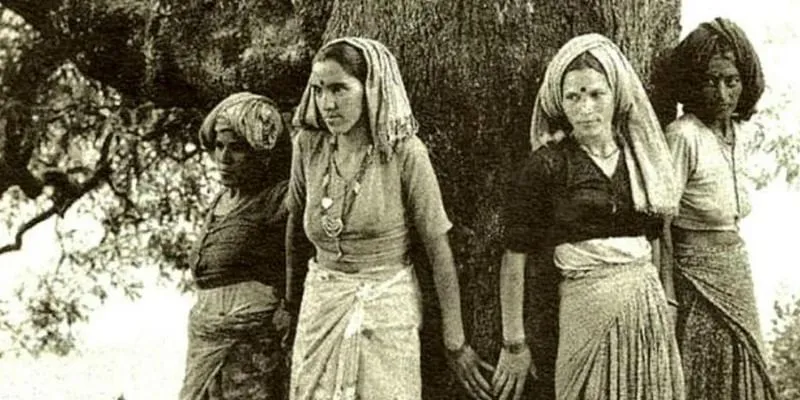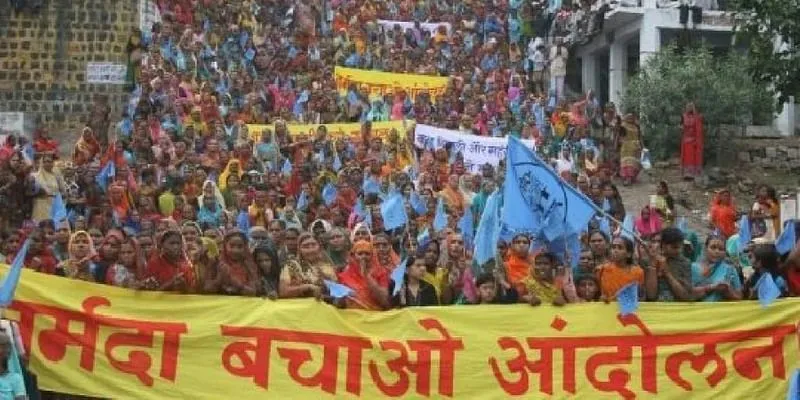Here are 5 most powerful environmental movements in India's history
With Earth’s natural resources dwindling, these environmental warriors in India have put their best foot forward to save the planet.
Mahatma Gandhi once aptly said, “Earth provides enough to satisfy every man's needs, but not every man's greed.”
However, for many centuries, human beings have been exploiting the Earth’s many natural resources. With the depleting resources and natural energy, and the ill-effects of carbon emissions, we are now facing the detrimental effects of our actions.
In India, in the past and the present, social activists have fought to preserve and restore Mother Nature. Through environmental and social movements, citizens have time and again reminded the world of the importance of preserving our Pale Blue Dot, and raised their voices to highlight environmental concerns.
Here are some of the environmental movements that have left a mark on our rich Indian history:
The Bishnoi Movement
In the 1700s, in Khejarli, in the Marwar region of Rajasthan, trees were ordered to be cleared for a new palace to be built.

Image: Civilhindipedia
One of the villagers, Amrita Devi, could not bear to witness such an exploitation of the floral habitation. To stop the deforestation, she hugged the trees, while also encouraging others to do the same. More than 360 Bishnoi villagers were martyred in this movement.
The Bishnoi faith, that was established in 1485 AD by Guru Maharaj Jambaji, prohibited them from harming trees and animals. The Maharaja, upon learning about these events, rushed to the village and apologised to the community, and ordered the soldiers to cease their operations. He then declared the Bishnoi state a protected area.
The Chipko and Appiko Movements
Led by Sundarlal Bahuguna, Gaura Devi, Sudesha Devi, Bachni Devi, Chandi Prasad Bhatt, Govind Singh Rawat, Dhoom Singh Negi, Shamsher Singh Bisht and Ghanasyam Raturi in 1973, the main objective of the Chipko movement was to protect the trees from the axes of forest contractors.
Bahuguna enlightened the villagers about the importance of trees, telling them how they prevent soil erosion and benefit the environment with rain and purified water. The main demand of the protests was that the trees should not be cut as they benefit the locals. The Chipko movement garnered publicity in 1978 when a few women had to face police brutalities.

Image: IndiaTimes
The then Uttar Pradesh Chief Minister Hemwati Nandan Bahuguna set up a committee to look into the matter, which eventually ruled in the favour of the villagers.
The event went on to become an example for all future environmental movements across the world.
Similarly, Uttara Kannada and Shimoga districts of Karnataka saw a southern version of the Chipko movement, known as the Appiko movement or Appiko Chaluvali. The movement used various methods to raise awareness such as foot marches in the interior forest, slide shows, folk dances, street plays etc.
The main aim of the movement was to rally against the felling and commercialisation of the natural forest and disturbing the tribal livelihood.
Save Silent Valley Movement
Silent Valley is a tropical area in Kerala which is rich in biodiversity. In 1978, however, the lush evergreen cover was to be deforested for the construction of a hydroelectric dam across the Kunthipuzha river by the Kerala State Electricity Board (KSEB).

Silent Valley (Image: Kerala Tourism)
The locals feared that the project would submerge at least 8.3 square kilometres of the green cover around the dam area. Several NGOs opposed the project, and urged the government to abandon it. Kerala Sastra Sahitya Parishad (KSSP), an NGO, and the poet-activist Sughathakumari played an important role in the Silent Valley protests
In January 1981, the government relentlessly gave in to the demands of the population and called off the project. They declared the Silent Valley as a protected area.
Jungle Bachao Andolan
In 1982, in the Singhbhum district of Bihar, the state government had decided to replace the natural Sal forests with the highly-priced teakwood trees. The tribals of Singhbhum protested this decision.
The movement was called by many environmentalists as ‘Greed Game Political Populism’. It later spread into the states of Jharkhand and Odisha.
Narmada Bachao Andolan (NBA)
Led by Medha Patkar with the support of Arundhati Roy, Baba Amte, and Aamir Khan, along with the adivasis, farmers, environmentalists, and human rights activists, the Narmada Bachao Andolan took place in the year 1985.

Narmada Bachao Andolan (Image: TimesNext)
The main aim of the movement was to protest the building of several large dams across the Narmada river. It was kicked off when the people displaced by the construction of the Sardar Sarovar Dam were not provided proper rehabilitation and resettlement.
Although unsuccessful in their endeavour, they turned the focus into the preservation of the environment and the ecosystems of the valley. The NBA questioned the model of unchecked development across the world.
Edited by Kanishk Singh








